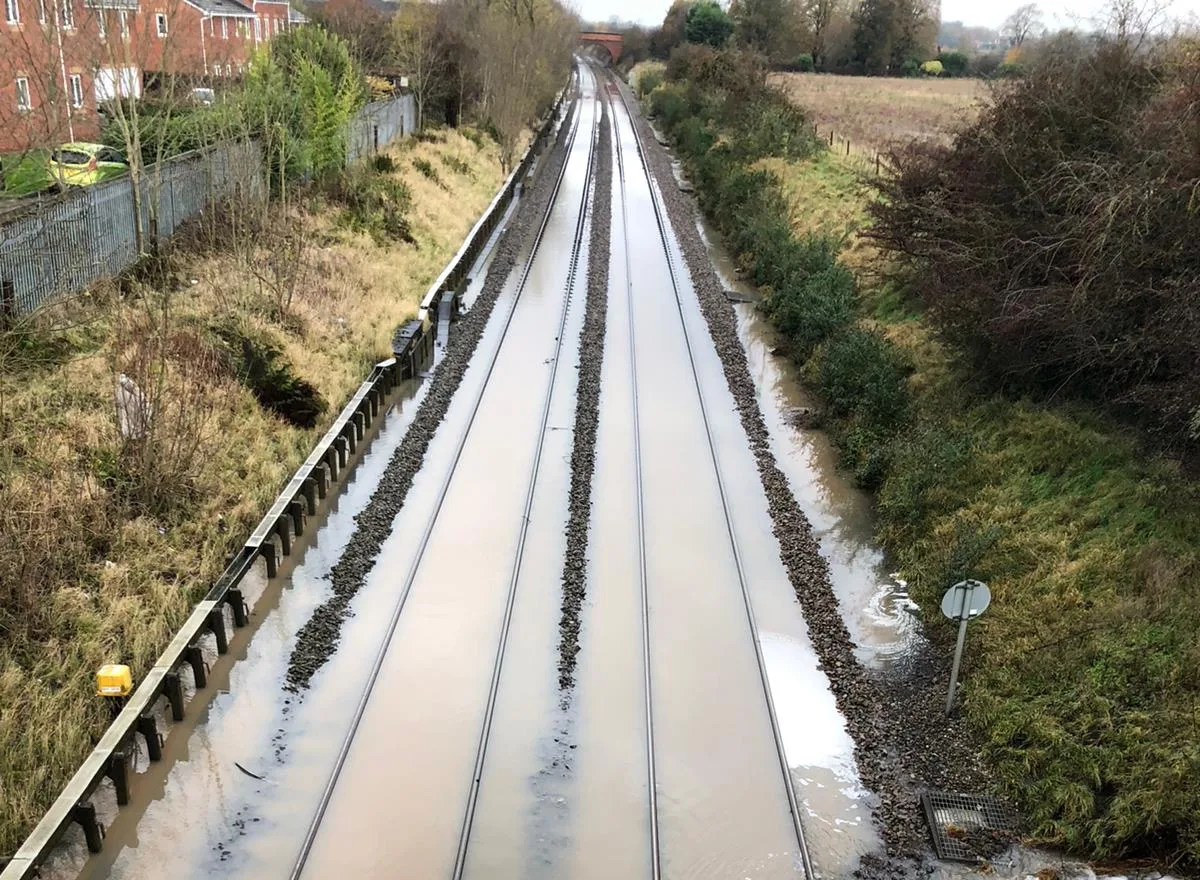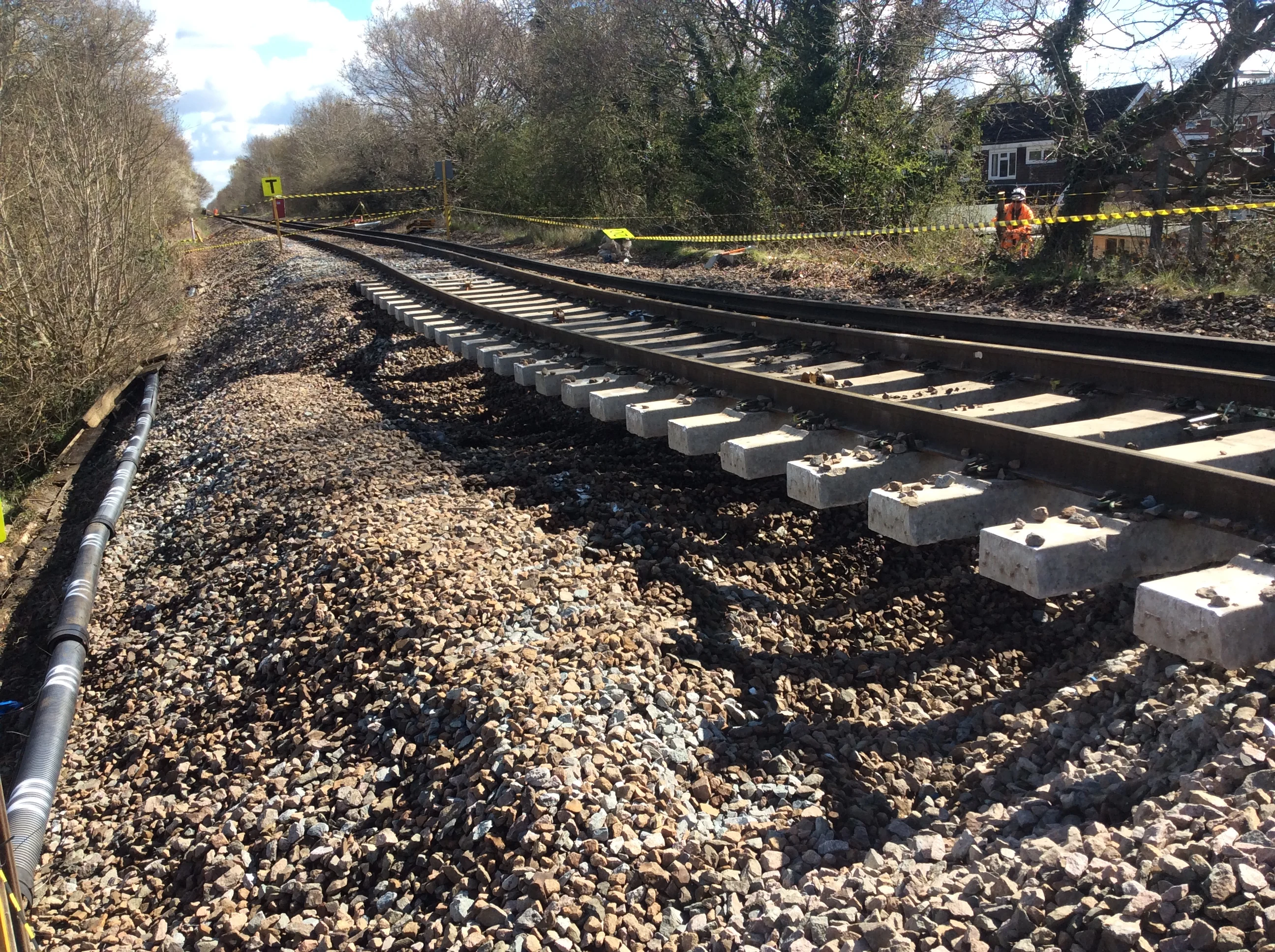In fact, heavy rain can cause flooding on the tracks meaning trains speed up and brake slower than normal
How can heavy rainfall impact the railway?
Floods
Heavy rainfall can cause flooding as rain water, debris, silt and mud can block the lines and damage rail infrastructure. To ensure trains can continue running, Network Rail teams remove debris and repair damage.
Some sections of the railway were built in cuttings and tunnels at a lower level than their surrounding areas. Other sections of the railway sit on flat land with limited drainage. These areas can be overwhelmed during heavy rainfall, which can result in flooding.
Flooding can cause lasting damage to rail infrastructure which can take days, weeks or months to repair.
Landslips
Landslips on the railway are the result of soil, rocks and earth falling onto the track. This can partially block the track or fully block the track. Lines are closed until any large obstructions can be removed safely.
Landslips occur when water in the ground forces soil apart. These grains of soil no longer stick together, reducing the strength a slope has to stand up. This causes a slope to begin slipping downhill. Landslips can happen on any part of land and can have an affect on roads, railway and other infrastructure. Their frequency is related to the weather, typically after periods of heavy or consistent rainfall.
Find out how Network Rail reduces delays caused by landslips.
Advertisement


